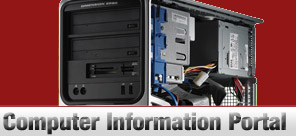

|
|
|
||||
 |
|
 |
|||
|
Parameter 2 - The interrupt request level (IRQL) that was required Parameter 3 - The type of operation, read-0, write-1 Parameter 4 - The address of the instruction itself Applicable to the following Vista configurations: Home Basic, Home Premium, Ultimate, Business, Enterprise, Starter, Home Basic N, Business N, Business 64-bit Edition, Home Basic 64-bit Edition and Business N 64-bit Edition. This STOP error can occur during startup or at any other time. The 8 digit hexadecimal number 0x0000000A translates to the bug check code "IRQL_NOT_LESS_OR_EQUAL" which may be caused by the following: 1. A kernel-level application or device driver running in kernel mode tried to read or write to a memory location that had restricted permissions. The code IRQL_NOT_LESS_OR_EQUAL indicates that the interrupt request level (IRQL) was higher than the number that was expected. A process running in kernel mode cannot access a process that has an IRQL which is greater than its own.2. Components of the hardware may have failed such as the memory chip, the processor or motherboard. It may also indicate problems in video or disk adapters or device driver incompatibility issues. 3. Computer Hardware may not be Vista compatible. This STOP error usually results from the faulty installation of System Services, BIOS firmware or device drivers. It can also be caused by incompatible virus scanners or backup tools. 4. Sometimes viruses or the anti-virus software that is running on the computer may cause problems. 5. Third party software applications such as device drivers may also have software bugs which access unprotected or restricted memory. Sometimes the name of the application or driver that caused this problem will be displayed on the screen immediately after the STOP error information. 6. You are trying to install Vista on a computer with more than 3GB of RAM 7. You are trying to install Vista on a computer which is running a Storport miniport driver 8. You are trying to install Vista on a computer that has a controller that utilizes 32-bit DMA (direct memory access). 9. Repeatedly putting a laptop with Vista operating system on a sleep cycle mode can also cause this problem. 10. Computer runs QuickTime 7 on Vista which is trying to open a movie file with .mov extension. Solutions:
|
|
|||||||||||||||||||||||||||||||||||||
| Home l Help l Privacy Policy l User Agreement l About Us l Contact Us l Link to Us |